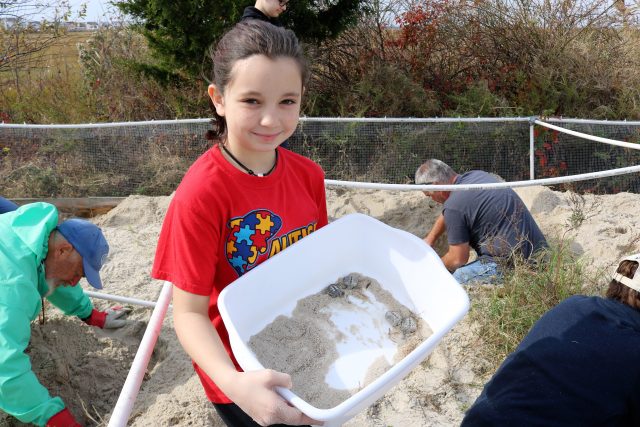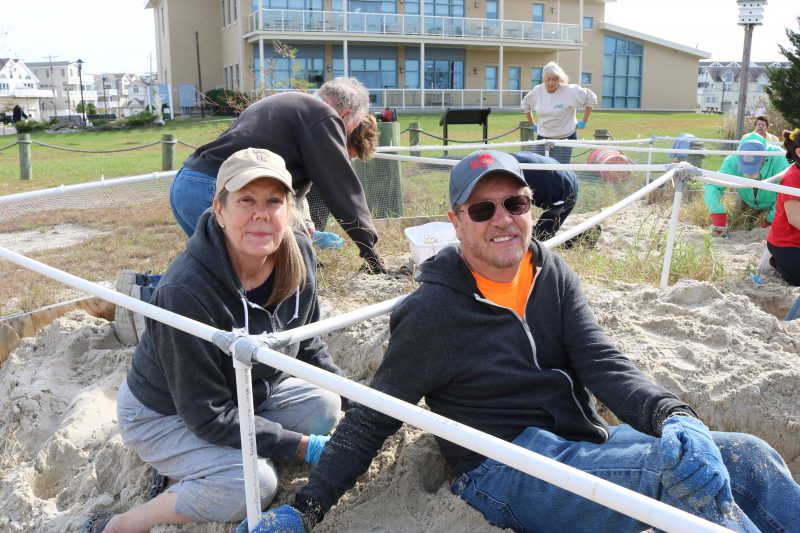
By MADDY VITALE
This has been the year of the unusual. First, it was a very mild winter. Then, in March, the coronavirus pandemic shut down the country.
For husband and wife Steve and Susan Ahern, who run Sea Isle City’s Terrapin Rescue, turtle duty during the start of the nesting season in May would typically mean a return to normal.
But, strangely, the diamondback terrapins are largely missing so far this nesting season.
It is not only perplexing to the Aherns, but also experts from the Wetlands Institute in Stone Harbor, Steve Ahern noted in an interview on Saturday.
“It’s been a real late start to the nesting season,” he said. “The last time it was this late was in June of 2003.”
The Wetlands Institute has been keeping records on diamondback terrapin nesting seasons since 1990 and this is the third-latest start to the typical season, Ahern said.
Over the weekend, Ahern took his usual tour of Sea Isle as well as other coastal communities to see if there were any terrapins crossing a roadway or in need of a little help to find soft or sandy soil to lay their eggs.
“I have seen very few,” he said. “I go out and look in the bay to see if they are there. Maybe there aren’t as many male turtles. Maybe it is the water temperatures.”

As of this past weekend, Ahern said they have not received any turtle sighting calls in Sea Isle.
“There was one call about a turtle in Margate,” he said. “People are like, “I haven’t seen any.'”
Nesting season for diamondback terrapins, which can live 30 years or more, is normally from May to July, when females emerge from the marshlands to lay their eggs.
It can take anywhere from eight to 14 weeks for the eggs to hatch. Since the terrapins typically nest in sandy soil, places such as the beaches and dunes give turtles a safe place to lay their eggs.
Ahern has some advice for anyone who sees a terrapin in distress or in danger, especially while crossing the roadway.
“You have to help them cross in the direction they are going. They will nest any place soft enough to dig – even people’s front yards,” he said.
He emphasized that if someone cannot, for example, move the turtle along safely due to traffic they should call the Aherns at (609) 263-7358.

“Last year, around May 27, the turtles began coming out and by the first week of June there was a lot of nesting up and down the coast,” Ahern said.
“The latest start to nesting season was June 14, 1993, and in 2003 it was about a week before. It is not really known why,” he added.
He continued, “The water temperature could have a lot to do with it. It wasn’t a cold winter and terrapins came out of hibernation at the end of February and March and April is mating season.”
The Sea Isle City Terrapin Rescue group was created by the Aherns in 2009. It is funded through the Sea Isle City Environmental Commission and receives permitting through the Wetlands Institute.
The Aherns and volunteers constructed two turtle nesting boxes at the library at 4800 Central Avenue three years ago.
Since then, they maintain and repair the boxes and will be ready to put any rescued terrapins in the nesting area so that they may safely lay their eggs.
Ahern said he and his wife appreciate the dedicated volunteers to the turtle rescue, Marc Virgilio, of Sea Isle, and Jeff Lawson, of Ocean View, who brought along his young children, Cole and Sara, to help out.
The Aherns are hoping the terrapins, which they have dedicated so many years to rescuing, start to appear in bigger numbers.
“I guess the turtles will come out soon,” Steve Ahern said. “That is what we are hoping.”
For more information call Steve and Susan Ahern at (609) 263-7358.








